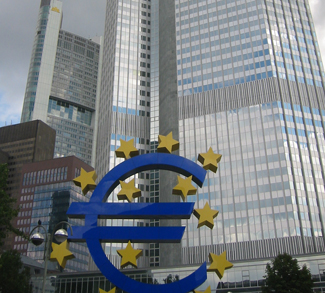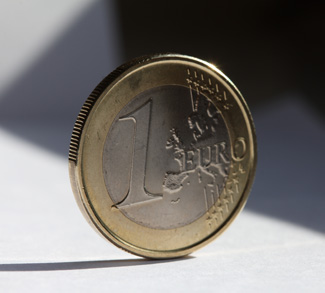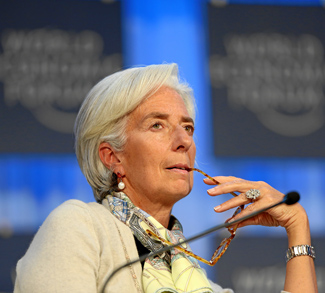The coming year could be the make-or-break moment for the embattled eurozone. Europe could either continue on the path of ever-greater integration – or return to being a regional group of rival states.
It will be the year when the rescue plan for the euro presented by Germany and France this month in Brussels either takes flight upon a new spirit of European unity or falls flat amid nationalist squabbles.
Depending upon the success or failure of the plan — which is to be formalized as a new intergovernmental treaty by March — Europe will likely go one of two ways. It will either continue on its postwar path of ever greater political and economic integration or fall back toward its traditional past of often-quarreling rival states.
That might sound like a dire assessment. But after three years of the euro crisis, no one, including Europe’s leaders, underestimates the stakes.
Since EU leaders unveiled the new plan on December 9, they have worked hard to portray it as the only way forward — not just for the 17 eurozone states but for all of the EU’s 27 members. And they have portrayed support for the plan as nearly unanimous.
“This is not an agreement at 17-plus, but an agreement at 27-minus,” European Commission President Jose Manuel Barroso said on December 13 to the European Parliament in Strasbourg.
“Last week, most heads of state or government of the member states showed their readiness to move ahead with European integration towards a fiscal stability union. They showed that they want more Europe, not less.”
A Step Too Far?
The new plan seeks to restore investor confidence in the euro by asking profligate euro countries not just to be more frugal but for the first time also imposing sanctions for failure to meet austerity targets. In effect, it seeks to save the eurozone by transferring an unprecedented new measure of the member nations’ sovereignty to Brussels.
But there is no hiding that some EU states — particularly Britain, which refused to back it — see the proposed new pact as a step too far toward European integration. And such reservations could make it a challenge for some of the governments that endorsed the plan in Brussels to still obtain domestic approval for the idea of “more Europe, not less.”
“I think the biggest problem is really to have the governments on Europe’s periphery credibly agree to this arrangement,” says Dalibor Rohac, an economist at the Legatum Institute in London.
“Countries like Greece or Italy or Portugal have been trying really hard to get their fiscal house in order, very often at huge social costs and very often at costs to their economic growth, and I can easily imagine that if their governments tried to force [more] austerity on their populations through this treaty and if they try to credibly renounce fiscal sovereignty over their budgets, it could lead to resentment and popular backlash and we are already seeing that backlash in places like Greece.”
The German Model
One reason resentment could take on nationalist tones is that the pact is widely seen as a German-imposed strategy to fix the continent’s problems.
Berlin, which has paid the lion’s share of eurozone bailouts, faces huge resistance at home to any new arrangements transferring funds to stricken countries. So it has come up with a model for Europe that emphasizes German values like frugality and hard work instead as the remedy.
Under the German formula, the periphery countries are to observe greater austerity while Germany — the economic motor of the EU — uses its export industries to power economic growth and bring the euro back to health.
But how well this model would work is a question. “Countries on the periphery are losing their competitiveness and, while Germany may be able to export, if the world economy and the rest of Europe is depressed it really won’t have that many places to export to anyway,” Rohac says. “So I can’t really see this as a model that could work.”
The country’s central bank recently predicted the German economy will slow sharply next year thanks to the debt crisis. The Bundesbank said on December 9 that economic output will rise just 0.6 percent in 2012 compared to its rise of 3 percent this year.
Too Much ‘Europe’?
There are not just doubts about the new pact in some eurozone countries. There is also uncertainty in some EU countries that have not yet joined the euro.
In the Czech Republic, Prime Minister Petr Necas said on December 14 that he personally opposed the pact’s call for each EU country to contribute to a 200 billion-euro ($260 billion) injection for the International Monetary Fund to support countries with high debt loads.
And in Poland, thousands of people marched in Warsaw on December 13 to protest calls for deeper integration with the European Union. That is despite the government’s strong backing for the proposed pact.
All those may be early signs of the difficulties the proposed pact could have in keeping the momentum of its unveiling in Brussels less than a month ago.
In 1997, long before the euro appeared on European streets, euroskeptic Martin Feldstein, a leading American economist based at Harvard University, doubted the currency could succeed without a political and fiscal union.
But he also predicted something else: that if Europe did increasingly integrate in order to support its common currency, the stresses of those efforts would be more likely to lead to increased tensions, or even conflicts within Europe.
The coming months will show whether tensions indeed rise over the eurozone’s new drive toward fiscal union and sabotage it or whether, instead, the new pact brings the ailing euro back to health.
If the pact does not save the euro, it’s not clear whether Berlin is prepared to float or back any other proposals. Germany and other richer euro countries are believed to be ready to consider creating a smaller common currency zone of their own with a high level of fiscal coordination and free of the weaker eurozone members.
That would be the breakup of the eurozone and the beginning of a new journey for Europe into an uncharted future.
Charles Recknagel is a contributor to Geopoliticalmonitor.com



